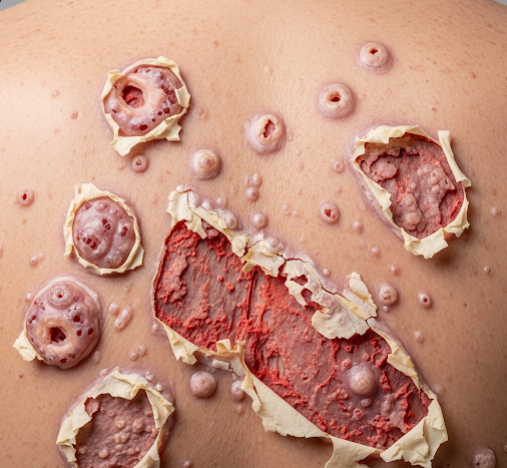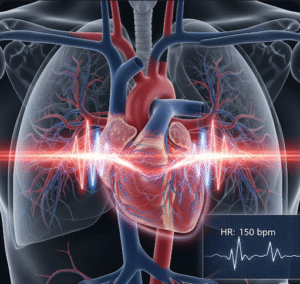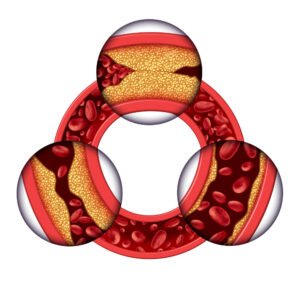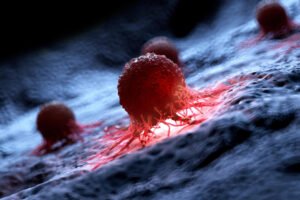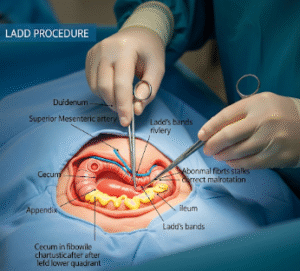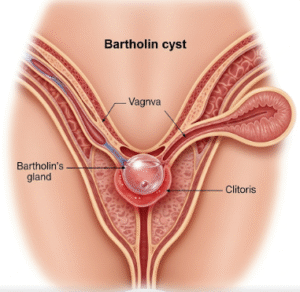Overview
Toxic Epidermal Necrolysis (TEN) is a rare but life-threatening skin disorder characterized by widespread detachment of the epidermis, mucosal involvement, and extensive blistering. It is considered a severe variant of Stevens-Johnson Syndrome (SJS) and is usually triggered by medications, infections, or rarely, vaccines. TEN can rapidly progress to systemic complications, including infections, fluid loss, and multi-organ failure, making early recognition and treatment critical. South Korea has advanced burn units and dermatology centers that provide specialized care for TEN, including intensive monitoring, wound management, supportive therapy, and immunomodulatory treatments, significantly improving patient outcomes.
What is Toxic Epidermal Necrolysis?
Toxic Epidermal Necrolysis is an acute mucocutaneous reaction resulting in extensive epidermal necrosis and detachment. The condition affects large areas of the body, typically over 30% of total body surface area, and often involves mucous membranes such as the eyes, mouth, and genitals. TEN is primarily medication-induced, with common triggers including antibiotics, anticonvulsants, and nonsteroidal anti-inflammatory drugs (NSAIDs). The pathophysiology involves immune-mediated apoptosis of keratinocytes, leading to skin sloughing and systemic inflammatory response. In South Korea, multidisciplinary teams—including dermatologists, intensivists, and burn specialists—manage TEN with precision and specialized supportive care.
Symptoms
TEN presents with a rapid onset of severe and often painful symptoms:
- Widespread skin redness and blistering: Often starting with macules and progressing to large areas of epidermal detachment
- Mucosal involvement: Painful erosions in the mouth, eyes, genitalia, and respiratory tract
- Fever and malaise: Systemic signs often precede skin manifestations
- Pain and tenderness: Severe discomfort at affected skin areas
- Flu-like symptoms: Including fatigue, sore throat, and body aches
- Rapid skin peeling: Sheets of skin may detach spontaneously, resembling severe burns
- Eye complications: Conjunctivitis, corneal ulceration, or visual impairment in severe cases
Early recognition of these symptoms in Korea allows for immediate hospitalization and initiation of life-saving interventions.
Causes
The primary cause of TEN is a hypersensitivity reaction, most commonly to medications:
- Medications: Antibiotics (penicillins, sulfonamides), anticonvulsants (phenytoin, carbamazepine), NSAIDs, allopurinol
- Infections: Viral or bacterial infections can occasionally trigger TEN
- Genetic predisposition: Certain HLA types may increase susceptibility
- Other factors: Rarely, vaccines or unknown environmental triggers
The reaction involves immune-mediated destruction of keratinocytes, leading to extensive epidermal necrosis and detachment.
Risk Factors
Some individuals are more likely to develop TEN:
- Recent use of high-risk medications
- Genetic predisposition (specific HLA alleles)
- History of drug hypersensitivity reactions
- Preexisting comorbidities, such as autoimmune disorders
- Older age or immune system compromise
- Concurrent infections or systemic illness
Identifying these risk factors helps clinicians in South Korea implement early preventive measures and vigilant monitoring.
Complications
TEN can rapidly progress to life-threatening complications if not managed promptly:
- Severe infections and sepsis: Due to loss of skin barrier
- Fluid and electrolyte imbalance: Leading to dehydration and shock
- Organ failure: Including renal, hepatic, and respiratory complications
- Scarring and pigmentation changes: Post-recovery, including ocular sequelae
- Respiratory complications: Airway involvement may require ventilatory support
- Long-term morbidity: Chronic pain, visual impairment, and psychological distress
- Mortality risk: Up to 30% in severe cases without timely intervention
South Korean burn and dermatology centers use ICU-level monitoring and multidisciplinary care to minimize these complications.
Prevention
Preventing TEN focuses on careful medication management and early recognition:
- Avoidance of known high-risk drugs in susceptible individuals
- Genetic testing for HLA alleles before prescribing certain medications (e.g., carbamazepine)
- Immediate discontinuation of suspected drugs at the first sign of rash or mucosal involvement
- Patient education about early warning symptoms of skin reactions
- Close medical supervision for individuals with prior drug hypersensitivity
Awareness and preventive strategies in Korea help reduce the incidence and severity of TEN.
Treatment Options in Korea
South Korea offers comprehensive and multidisciplinary care for TEN, combining critical care, dermatology, and immunology expertise:
Diagnosis:
- Thorough clinical examination of skin and mucous membranes
- Detailed medication and medical history to identify potential triggers
- Laboratory tests for systemic involvement, including blood counts, liver and kidney function
- Skin biopsy to confirm epidermal necrosis and differentiate from other dermatological conditions
Medical Treatments:
- Immediate withdrawal of causative medications
- Supportive care: Intravenous fluids, electrolyte replacement, temperature control, and pain management
- Wound care: Specialized burn unit care with sterile dressings, topical antibiotics, and prevention of secondary infections
- Immunomodulatory therapies: Corticosteroids, intravenous immunoglobulin (IVIG), or cyclosporine in select cases
- Nutritional support: Enteral or parenteral nutrition to maintain caloric intake during extensive skin loss
Rehabilitation and Support:
- Eye care to prevent long-term visual complications
- Physical therapy to maintain mobility and prevent contractures
- Psychological support for coping with acute trauma and chronic sequelae
- Long-term follow-up for skin healing, scarring, and systemic recovery
Korean hospitals provide highly specialized care for TEN patients, integrating advanced ICU support, dermatological expertise, and multidisciplinary rehabilitation to improve survival and quality of life.

